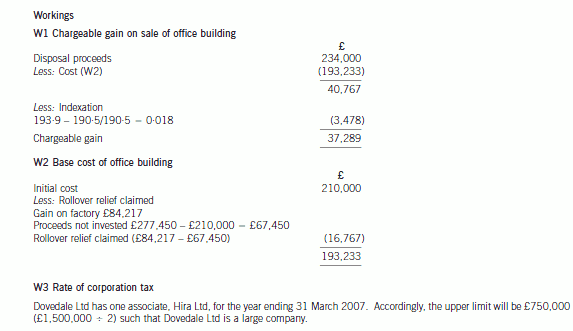2021年ACCA考试:会计师与企业知识点(3)
发布时间:2021-02-13
又到了给大家分享ACCA考试会计师与企业科目知识点分享时刻了,备考的小伙伴赶紧来看看吧!
Classifying organization by ownership/control
Public sector organizations
The public sector is that part of the economy that is concerned with providing basic government services and is thus controlled by government organizations.
Illustration 3 – The nature of organizations
The composition of the public sector varies by country, but in most countries, the public sector includes such services as:
§ police
§ military
§ public roads
§ public transit
§ primary education and
§ healthcare for the poor.
Private sector organizations
The private sector, comprising non-government organizations, is that part of a nation’s economy that is not controlled by the government.
Illustration 4 – The nature of organizations
This sector thus includes:
§ businesses
§ charities and
§ clubs.
Within these will be profit-seeking and not-for-profit organizations.
Co-operatives
A co-operative is an autonomous association of persons united voluntary to meet their common economic, social and cultural needs and aspirations through a jointly owned and democratically controlled enterprise.
(The International Co-operative Alliance Statement on the Co-operative Identity, Manchester 1995).
Co-operatives are thus businesses with the following characteristics:
§ They are owned and democratically controlled by their members – the people who buy their goods or use their services. Investors do not own them.
§ Co-operatives are organized solely to meet the needs of the member-owners, not to accumulate capital for investors.
Illustration 5 – The nature of organizations
For example, a retail co-operative could comprise a group of people who join to increase their buying power to qualify for discounts from retailers when purchasing food.
Expandable text
Co-operatives are similar to mutual organizations in the sense that the members/clients also own the organizations that they exist for. However, they tend to deal in primarily tangible goods and services such as agricultural commodities or utilities rather than intangible products such as financial services.
以上就是51题库考试学习网带给大家的全部内容,希望能够帮到大家!预祝大家在ACCA考试中取得满意的成绩,如果想要了解更多关于ACCA考试的资讯,敬请关注51题库考试学习网!
下面小编为大家准备了 ACCA考试 的相关考题,供大家学习参考。
(iii) delegation. (3 marks)
(iii) DELEGATION is giving a subordinate the discretion to make decisions within a certain, defined sphere of influence. Therefore the superior must possess the authority to delegate. The key element here is discretion and the level of authority within a specific sphere which is behind the problems at Flavours Fine Foods. Authority should be clearly delegated as appropriate to the managers and, through them, to the supervisors.
(b) Misson has purchased goods from a foreign supplier for 8 million euros on 31 July 2006. At 31 October 2006,
the trade payable was still outstanding and the goods were still held by Misson. Similarly Misson has sold goods
to a foreign customer for 4 million euros on 31 July 2006 and it received payment for the goods in euros on
31 October 2006. Additionally Misson had purchased an investment property on 1 November 2005 for
28 million euros. At 31 October 2006, the investment property had a fair value of 24 million euros. The company
uses the fair value model in accounting for investment properties.
Misson would like advice on how to treat these transactions in the financial statements for the year ended 31
October 2006. (7 marks)
Required:
Discuss the accounting treatment of the above transactions in accordance with the advice required by the
directors.
(Candidates should show detailed workings as well as a discussion of the accounting treatment used.)
(b) Inventory, Goods sold and Investment property
The inventory and trade payable initially would be recorded at 8 million euros ÷ 1·6, i.e. $5 million. At the year end, the
amount payable is still outstanding and is retranslated at 1 dollar = 1·3 euros, i.e. $6·2 million. An exchange loss of
$(6·2 – 5) million, i.e. $1·2 million would be reported in profit or loss. The inventory would be recorded at $5 million at the
year end unless it is impaired in value.
The sale of goods would be recorded at 4 million euros ÷ 1·6, i.e. $2·5 million as a sale and as a trade receivable. Payment
is received on 31 October 2006 in euros and the actual value of euros received will be 4 million euros ÷ 1·3,
i.e. $3·1 million.
Thus a gain on exchange of $0·6 million will be reported in profit or loss.
The investment property should be recognised on 1 November 2005 at 28 million euros ÷ 1·4, i.e. $20 million. At
31 October 2006, the property should be recognised at 24 million euros ÷ 1·3, i.e. $18·5 million. The decrease in fair value
should be recognised in profit and loss as a loss on investment property. The property is a non-monetary asset and any foreign
currency element is not recognised separately. When a gain or loss on a non-monetary item is recognised in profit or loss,
any exchange component of that gain or loss is also recognised in profit or loss. If any gain or loss is recognised in equity ona non-monetary asset, any exchange gain is also recognised in equity.
(c) Calculate the expected corporation tax liability of Dovedale Ltd for the year ending 31 March 2007 on the
assumption that all available reliefs are claimed by Dovedale Ltd but that Hira Ltd will not claim any capital
allowances in that year. (4 marks)


声明:本文内容由互联网用户自发贡献自行上传,本网站不拥有所有权,未作人工编辑处理,也不承担相关法律责任。如果您发现有涉嫌版权的内容,欢迎发送邮件至:contact@51tk.com 进行举报,并提供相关证据,工作人员会在5个工作日内联系你,一经查实,本站将立刻删除涉嫌侵权内容。
- 2020-09-05
- 2021-05-29
- 2020-10-10
- 2020-10-10
- 2020-09-05
- 2021-05-29
- 2021-02-13
- 2020-10-18
- 2021-02-13
- 2020-10-10
- 2021-02-13
- 2021-02-13
- 2019-01-04
- 2020-09-05
- 2019-06-22
- 2021-02-13
- 2020-10-10
- 2020-10-10
- 2020-08-15
- 2020-09-04
- 2021-02-13
- 2021-05-29
- 2020-10-10
- 2020-10-18
- 2020-10-10
- 2021-07-21
- 2020-10-10
- 2020-09-05
- 2020-09-05
- 2021-05-29